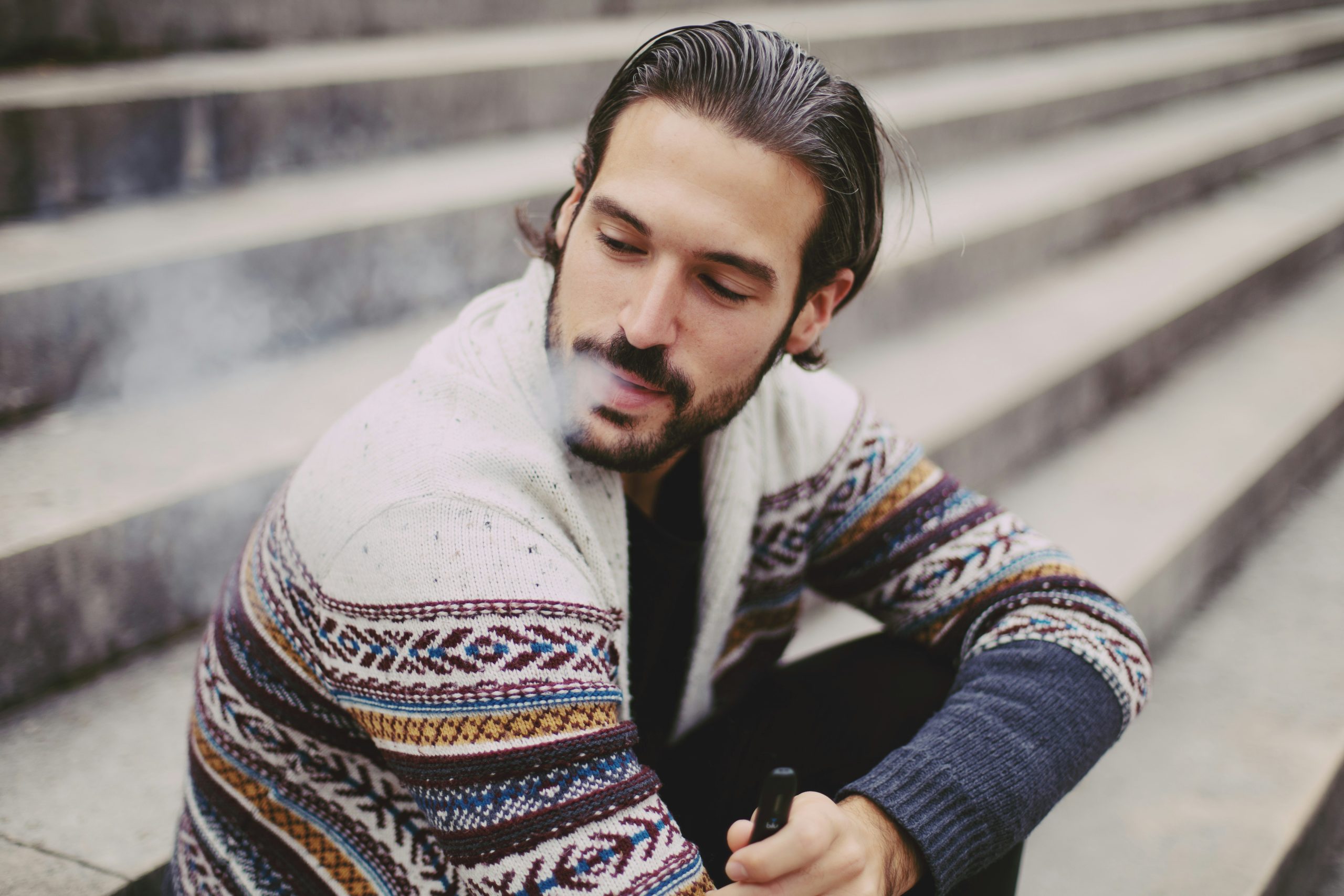Vaping was supposed to help people quit cigarettes. That’s what the pitch was anyway. Now it’s turned into something completely different, and a lot of people who never smoked started vaping instead. The whole thing evolved in ways nobody really predicted back when electronic cigarettes first showed up.
The Early Days Were Pretty Basic
Electronic cigarettes came around in the early 2000s trying to look like actual cigarettes. They had tobacco flavors, looked like the real thing, the idea was getting nicotine without all the tar and smoke damage. Most were disposable and honestly didn’t work that well. Battery died fast, vapor was weak, tasted like chemicals.
Serious smokers didn’t switch to these early versions because they weren’t satisfying. You’d puff on one and not get that throat hit cigarettes give you. Felt like sucking on a plastic stick that maybe did something. Nicotine delivery was all over the place, inconsistent.
Then vape mods happened. These stopped trying to look like cigarettes at all. Bigger batteries, tanks you could refill, settings you could adjust. People modified them to make huge clouds of vapor, which became its own weird hobby. Cloud chasing competitions are a real thing, sounds dumb but people take it seriously.
Nicotine Salts Changed Everything
Regular e-liquid had freebase nicotine in it, same type that’s in cigarettes. Problem is it’s really harsh at high concentrations. You can’t vape strong nicotine without your throat burning and coughing a lot. That meant people couldn’t get enough nicotine from vaping to actually replace cigarettes, especially heavy smokers.
Nicotine salts fixed this. The nicotine gets combined with an acid or something, makes it way smoother even at high strength. They made this popular with their pods, you could finally get pure nicotine hits like a cigarette but from vaping. Changed everything for people trying to quit smoking because it actually worked better.
Made it more addictive too probably. High-strength nicotine salt liquids have 50mg or 59mg per milliliter which is a lot of nicotine. If you’re chain-vaping that stuff you’re getting more nicotine than smoking cigarettes would give you. Whether that’s actually bad for you besides the addiction part, nobody really knows for sure yet. You’re not getting all the other garbage from smoke at least.
The Flavor Debate Got Political
Vape juice came in every flavor you could imagine. Fruit, dessert, candy, cereal, whatever. Critics said these flavors were obviously targeting kids. Adults like fruit flavors too but that argument didn’t matter much to regulators. FDA eventually banned most flavors in pod systems, left only tobacco and menthol.
The ban didn’t really accomplish what they wanted though. People just bought refillable devices that weren’t covered by the rules, or got flavored stuff from overseas. Black market expanded. Disposable vapes exploded partly because they found loopholes, and disposables still come in every flavor despite the supposed ban.
Flavors are a complicated issue honestly. Research shows they help adult smokers quit and stay quit. But flavors definitely appeal to teenagers who otherwise wouldn’t start nicotine. You can’t really satisfy both concerns with one policy, regulations tried and mostly made the market messier.
Youth Vaping Became a Panic
Teen vaping rates went way up between 2017 and 2019. High schools had kids vaping in bathrooms constantly. “Juuling” became slang for vaping. Parents panicked, media ran tons of stories about an epidemic.
Whether it was actually an epidemic is debatable. Teen smoking was at historic lows, maybe vaping replaced cigarettes instead of creating new addicts. Or maybe creating any new nicotine users is bad no matter what. Hard to say. Survey data measured “any use in past 30 days” which includes someone who hit a vape once at a party, so the numbers looked worse than daily use rates.
Schools put vape detectors in bathrooms like they were trying to catch criminals. Juul pulled most of their marketing and flavors under pressure. Age verification got stricter though enforcement is inconsistent. Teen vaping rates dropped by 2020-2021, could be because of regulations or just trends changing or pandemic keeping kids apart.
Health Effects Are Still Being Figured Out
Vaping is definitely less harmful than smoking cigarettes. This seems pretty clear from research so far. Cigarette smoke has thousands of chemicals, many of them will kill you eventually. Vape aerosol has way fewer chemicals and no burning involved. Long-term studies haven’t happened yet because vaping is too new, but short-term data shows it’s significantly less harmful.
That doesn’t make it safe though, just safer comparatively. Nicotine is addictive no matter how you get it. Affects brain development in young people which is why everyone worries about teens vaping. E-liquid has propylene glycol and vegetable glycerin which are safe to eat but we don’t really know about inhaling them for years. Some flavoring chemicals that are fine in food might be problematic when you breathe them repeatedly.
EVALI scared everyone in 2019. Hundreds of people got lung injuries, some died. Media covered it like all vaping was dangerous. Turned out it was vitamin E acetate in illegal THC cartridges causing it, not regular nicotine vapes. But the coverage damaged vaping’s reputation anyway because articles didn’t always make the distinction clear.
The Market Keeps Evolving
Disposable vapes are everywhere now. Elf Bar, Lost Mary, bunch of other brands. They dominate sales despite being terrible for the environment and costing more long-term. They’re just convenient and cheap upfront and still come in all the flavors. Most get thrown away with lithium batteries inside which is wasteful but nobody seems to care enough to stop buying them.
Regulations can’t keep up. By the time FDA reviews something, three new products launched that work slightly different and maybe aren’t covered by the same rules. The regulatory system was designed for cigarettes decades ago, doesn’t translate well to technology that changes every few months.
Conclusion
Smoking rates keep dropping while vaping grows. If vaping is way less harmful than smoking that’s probably good overall for public health. But young people who never would’ve smoked started using nicotine through vaping, which is its own problem. Both statements are true at the same time.
Ideally people would switch from cigarettes to vaping then quit nicotine completely. Some do that. Lots just vape forever instead. Whether that’s actually a problem depends on how harmful vaping turns out to be long-term, won’t know for sure for another decade or two at least. Nicotine pouches are growing too. Like Zyn and other brands, tobacco-free pouches with pure nicotine you stick in your mouth. No vapor, no smell, completely discrete. Some people switching from vaping to pouches, others use both depending on the situation. The nicotine market is splitting into different products for different uses.















